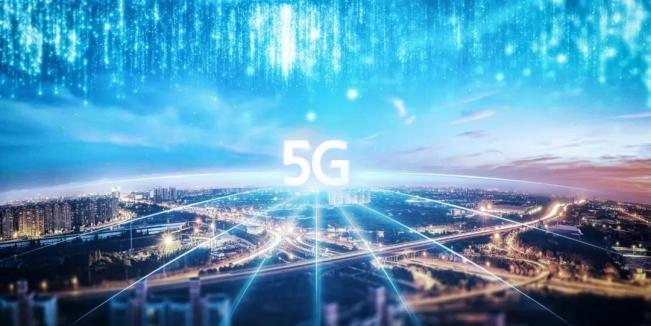5G will directly drive the total economic output of 1.3 trillion yuan

With the development of 5G commercial use, the impact of 5G on the economy and society has gradually emerged. At present, this impact is prominently reflected in the promotion of the development of the digital industry, but the supporting role of 5G in the transformation and upgrading of the real economy and the ability to create a better life for the people have also begun to emerge with the innovation and diffusion of applications.
2021 is the second year after the China Academy of Information and Communications Technology released the "White Paper on China's 5G Development and Economic and Social Impact" (hereinafter referred to as the "White Paper"). The "White Paper" estimates the economic and social impact of 5G in 2021. It is estimated that 5G will directly drive the total economic output of 1.3 trillion yuan in 2021, directly drive the economic added value of about 300 billion yuan, and indirectly drive the total output of about 3.38 trillion yuan. , Which indirectly drives the economic added value of about 1.23 trillion yuan, an increase of 33%, 39%, 31% and 31% respectively over 2020. At present, the full release of 5G's economic and social impact depends on the vigorous development of 5G applications, which to a large extent will depend on whether the industrial ecosystem supporting application innovation can gradually mature and complete. To achieve this goal, under the guidance of the government, all parties in the industry, such as telecom operators, equipment suppliers, content providers, solution providers, and industry customers, are gradually converging to communicate user needs, explore unified coordination and excellent performance. , Low-cost 5G products and service models. The next 1-2 years will still be a critical period for the gradual improvement of the 5G application industry ecosystem, and colleagues in the industry still need to work together to overcome difficulties. The "White Paper" focuses on showing 5G commercial development trends to all sectors of society and the industry, and objectively sorts out the progress, achievements, economic and social impacts and existing problems of 5G commercial development in 2021, and judges the development direction in the next 1-2 years.
2nd Anniversary of 5G Commercial Use Drives Rapid Development of Digital Economy
In 2021, China's 5G commercial use will celebrate its second anniversary. In the context of the promotion of policies and the acceleration of the digitalization process, the commercial development of 5G has continued to deepen, and good results have been achieved in network construction, technical standards, industrial development, application cultivation, and market performance, laying a solid foundation for the follow-up development of 5G The basics.
As a key base of digital infrastructure and a technology industry with extensive relationships, the development of 5G is expected to drive the rapid growth of the digital economy and accelerate the pace of digital transformation in the economy and society.
5G promotes the growth of the digital industry from both investment and consumption.
From the investment side, 5G stimulates all areas to increase digital investment. On the one hand, telecom operators continue to increase their investment in 5G networks and related supporting facilities, thereby driving the growth of the industry chain related to communication equipment manufacturing. According to public financial reports, the three basic telecom operators plan to spend about 184.7 billion yuan in 5G capital expenditures in 2021, an increase of 5.1% from 2020. On the other hand, with the in-depth development of 5G industry applications, other industries in the national economy have begun to increase investment in 5G and related ICT technologies. China Mobile’s financial report for the first half of 2021 shows that 5G private network services have driven China Mobile’s DICT incremental revenue to exceed 6 billion yuan, accounting for 48% of DICT incremental revenue and 17% of communications service incremental revenue during the same period; China Unicom’s 5G industry applications In the first half of the year, the accumulated contract amount exceeded 1.3 billion yuan; and China Telecom's 5G application scenario has nearly doubled compared with the end of 2020, and market demand has shown explosive growth.
From the consumer side, the development of 5G promotes the expansion and upgrade of information consumption. First, the construction of 5G networks promotes the upgrading of user terminal consumption. The expansion of 5G network coverage has pushed consumers into the era of 5G replacement, bringing the smartphone industry back to the growth trend. It is estimated that China's 5G mobile phone shipments will reach 250 million units in 2021, an increase of about 53% over last year. Second, the development of 5G drives the consumption of mobile users' data services. 5G's faster internet speed and many innovative digital services based on 5G, such as ultra-high-definition video, AR/VR, cloud gaming, etc., have greatly improved the ARPU of 5G users compared to 4G users. According to the financial report for the first half of 2021, China Mobile's 5GARPU value is 88.9 yuan, far exceeding the average ARPU value of its mobile users of 52.2 yuan. The increase in 5G user penetration has pushed its mobile APRU value to reverse the downward trend since 2018; China Telecom 5GARPU The value rose to 57.4 yuan, and the ARPU value of 5G packages for 4G users increased by 10%; the number of 5G packages of China Unicom increased rapidly, and the penetration rate of 5G users reached 37%. The ARPU value of mobile users was 44.4 yuan, an increase of 8.5% year-on-year.
Make up for 5G industry development shortcomings to build a 5G innovation ecosystem
The "White Paper" pointed out that the next 1-2 years will still be a critical period for China's 5G commercial development. During this period, the outstanding task of 5G commercial development is to integrate all forces in the industry according to the actual needs of market development and under the guidance of government policies, and gradually complement the networks, technologies, terminals, and standards faced by 5G application innovation. It is a shortcoming to build a relatively complete 5G innovation ecosystem, so as to lay a solid foundation for the explosion and prosperity of 5G application innovation. 1. Network coverage extends to rural areas, and industry capacity is strengthened. At present, China's 5G network is still in the early stage of construction, and has not yet reached the demand for effectively supporting consumer-level and industry-level application innovation. In the next 1-2 years, it is expected that 5G networks will continue to promote wide-area coverage, and use multi-frequency synergy to strengthen coverage, and strengthen industry-oriented 5G network supply capabilities. 2. The technical standards are advancing to R18, and the evolution direction is gradually clear. The 3GPP plans to determine the research content of the R18 version in December 2021. After the current research and discussion, it will evolve and enhance from several aspects such as continuous enhancement of broadband capabilities, fine design for vertical industries, and new business discussions. 3. New paths were explored for supporting products, and the industrial ecology was gradually improved. At the same time, with the in-depth advancement of 5G applications, more and more industry forces are gathering to explore the development of supporting products for 5G applications, and new trends will emerge in the development of virtual reality terminals, industry modules and terminals, industry platforms and solutions. Fourth, consumer-level applications are upgraded in cascade, leading by industry-level application demonstrations. At present, 5G applications are in a critical period of infiltrating from "point-like blossoms" to all industries, the entire process, and the entire link. The launch of the "Sailing" action plan has pointed out the direction for consumer-level applications and industry-level applications. In the future, it will continue to promote 5G applications to achieve a leap from 1 to N, and jointly build a new pattern for 5G to fully empower economic and social development.